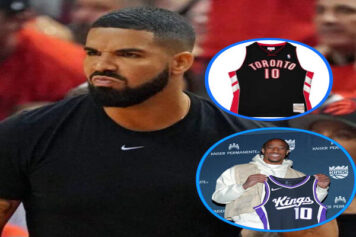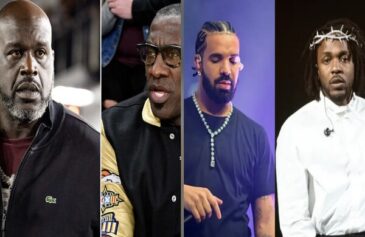Wednesday evening, I found myself standing in the Museum of Natural History’s SciCafe listening to a man basically tell me that we can give Kendrick Lamar an MRI and learn how he created good kid, m.A.A.d city – same for a Thelonius Monk piano solo. I was dubious, but intrigued.
Charles Limb is a neurosurgeon out of Johns Hopkins School of Medicine and he had traveled from Baltimore to NYC to offer his presentation, “The Neuroscience of Creativity.” The premise is this: artistic creativity is a neurological product that can be examined using rigorous scientific method.
I’m not here to get into those specifics, although this video provides a good synopsis. What I immediately keyed in on, however, and what has stuck with me, is that the two genres of music Limb chose to study were jazz and hip-hop.
Did you know that June is Black Music Month? Well, it is. And, as such, it bears mentioning that jazz and hip-hop are the two greatest musical creations of the last 150 years, they might be America’s two greatest artistic exports. Both genres were created, developed and perfected by black Americans.
At one point, when seeking to show the audience – which skewed mostly white with a median age of maybe 35 – what exactly freestyling was, he put up this clip of Mos Def on the big screen.
I got chills watching it in the SciCafe. This was partly because it was one of those moments where something that you had seen dozens of times – and hence became tragically mundane – reminded you once again why it was such a marvel to begin with. And the chills also came from watching the dropped jaws in the audience, some seeing this for the first time. Like Limb said, “Even if you hate rap music, you can’t deny that creativity.”
I’m not overly concerned with the answer to Limb’s question of “what is the neurology of creative genius?” Even if science creates some type of “creativity pill,” it’ll still be artificial, because they can’t recreate the humanity and conditions that created jazz and hip-hop. Just like, although it was fascinating to read about Data, The World’s First Robot Comic in GQ, there is no algorithm for Bill Cosby or Louis C.K.
But, maybe it’s easier to figure out the science of jazz and hip-hop than to truly come to grips with the why/how jazz was created in Congo Square of New Orleans in the late 19th century. Same for hip-hop’s late-70s genesis in the parks of the South Bronx. I guess Honeycutt said it best in Bamboozled, right?
And maybe the most “beautiful thang” from these beautiful people is the music they’ve given us – us being humans. So ain’t no kweshun The Shadow League is gonna celebrate it during Black Music Month.
Over the next couple of weeks you’ll read appreciations of some of our favorite artists and important albums. We’re taking the next two week’s editions of “Please JAM” (quickly becoming one of TSL’s signature features) to dig in the crates of black, as opposed to its normally ultra-current focus. TSL deputy editor Khalid Salaam and featured columnist Bomani Jones are planning a heated and elevated back-n-forth debate to determine whether it was Nas or Jay-Z that really won the “Ether vs. The Takeover” battle. And we have some other gems in store.
At the end of Limb’s presentation he put up a black and white photo of Miles Davis blowing his horn with different colors painting portions of his brain – the colors indicating the neuron activity. It was a wink-wink nod to the utter audacity of the ambition of distilling something like Nefertiti to a cold science, even if he’s going to try. TSL and I, though? We’ll just celebrate it. Please jam…



